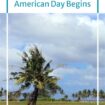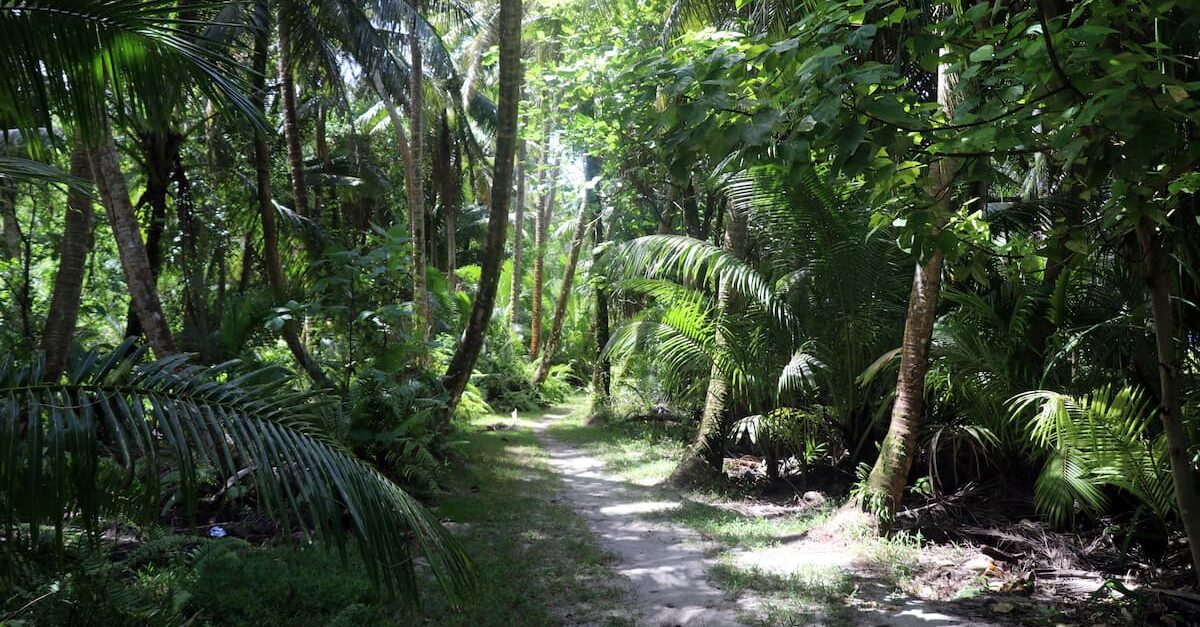
Go World Travel is reader-supported and may earn a commission from purchases made through links in this piece.
Guam is one of those places that causes even the well-traveled among us to pause when asked to identify it on a map.
Unless you’ve served in the U.S. military and been posted here, chances are you haven’t a clue where this 225 square mile island is, let alone what it is.
Yet Guam has a history stretching back thousands of years to 2000 BC when the Austronesian ancestors of today’s Chamorro people first arrived.

In 1521, Portuguese explorer Ferdinand Magellan was the first European to arrive during his circumnavigation of the globe on behalf of Spain.
It was another 44 years before Spain planted a flag and claimed the island, changing the Chamorro culture forever.
In more recent times, Guam played a critical role in World War II when the Japanese bombed the island just four hours after Pearl Harbor, thus launching one of the worst battles of the war.
With the U.S. victory, it became an unincorporated U.S. Territory in 1950 and has evolved in the decades since then to become a key military outpost, as well as a playground for Japanese and Korean vacationers.
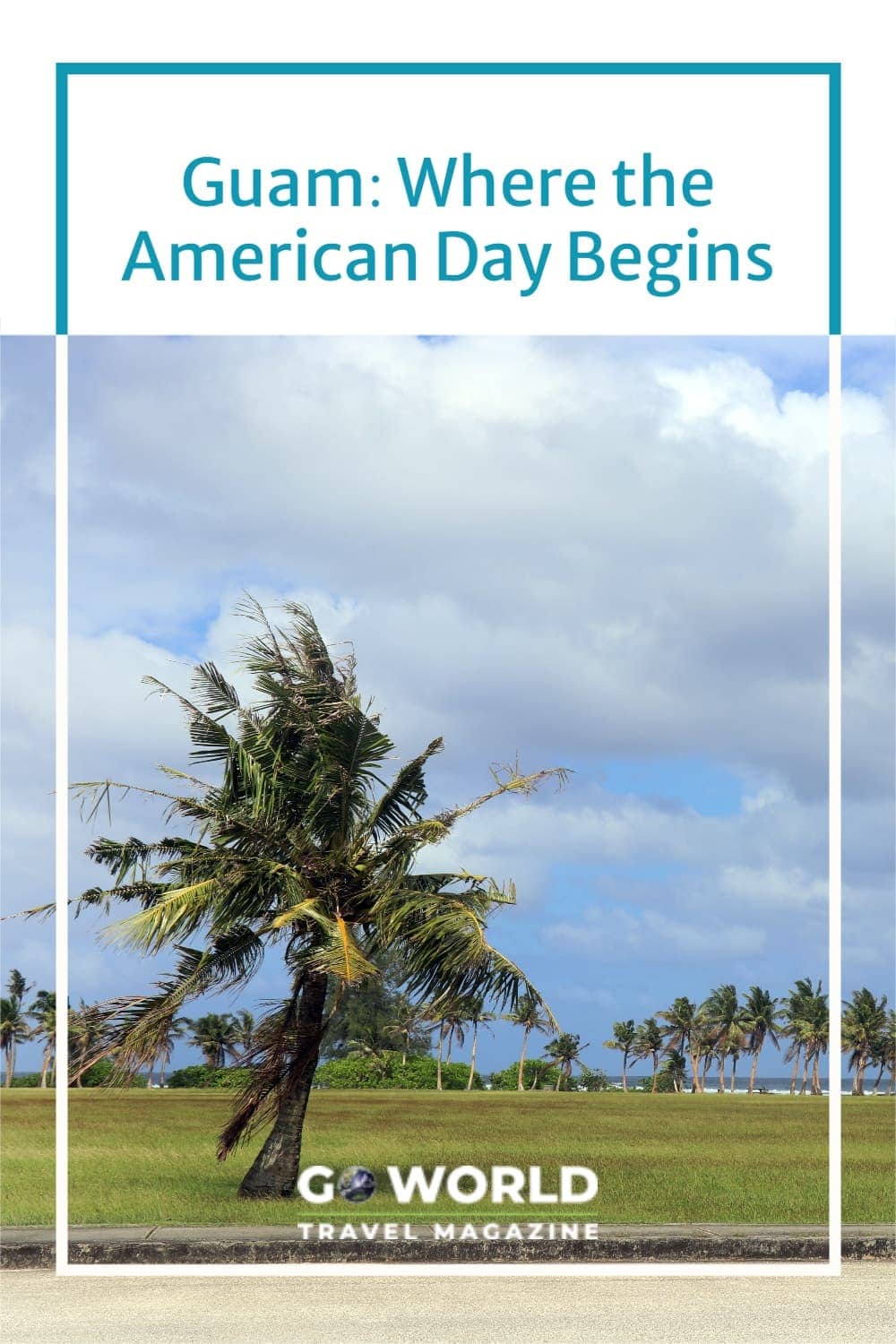
From the Deepest to the Tallest
Formed millions of years ago by two volcanos, Guam is the main island in the Mariana Islands chain. Around 30 miles long and 4 to 12 miles wide and situated between the Pacific Ocean on the east and the Philippine Sea on the west, it’s the first place where the sun rises on U.S. soil.
Sitting on the lip of the Marianas Trench, the deepest trench in the world reaching nearly seven miles below the surface, Guam is also the location of Mount Lamlam (“lightening” in Chamorro) on the island’s south side.
The tallest mountain in the world (Mr. Everest is the highest), Lamlam juts upward from the trench another 1,332 feet above sea level and is reputed to be the greatest change in elevation on earth over such a short distance. Bragging rights go to those who hike the leisurely two-hour ramble to the top.
While the reef surrounding Guam is a favorite for water sports of all types, it also has some of the best hiking trails. Passing by waterfalls, through tropical forests, past caves and rivers, up hills and down mountains, the trails are favorites of visitors and residents alike.
Join the Guam Boonie Stompers for one of their Saturday outings, but be sure to dress for the heat, wear sunscreen and take water. And don’t hike alone. It’s easy to get lost out there.
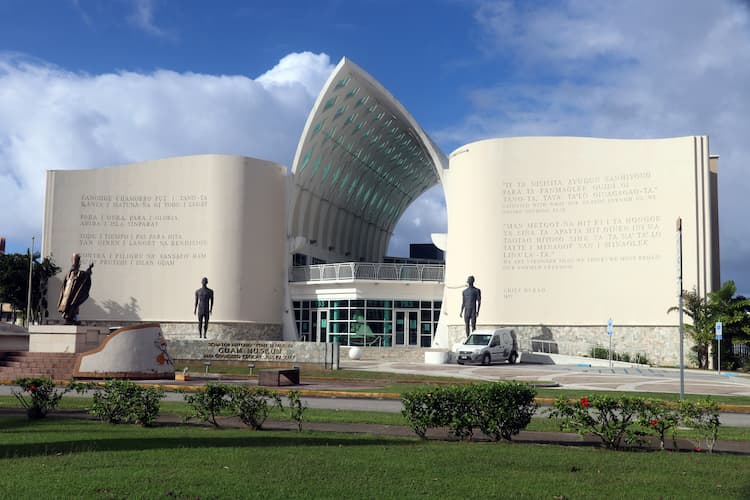
Happy Motoring
Circling the south side of the island is one of my favorite leisurely drives – Route 1 joins Routes 2 and 4 to loop around the outer edge of the island passing through villages that have long been inhabited by Chamorro families.
Along the way are spectacular lookout points, public parks and beaches, entrances to hiking trails, and villages with historical markers pointing out things like the place where Magellan is purported to have landed, the War in the Pacific National Historical Park and the Spanish Fort Nuestra Señora de la Soledad (c.1810).
The north side of the island is primarily limestone and has less vegetation than the mountainous south side, but still has a beauty that is well worth the drive.
When I took my first drive to Ritidian Beach in the Guam National Wildlife Refuge, a family of wild pigs darted across the winding road, tufted tails bobbing in the air.
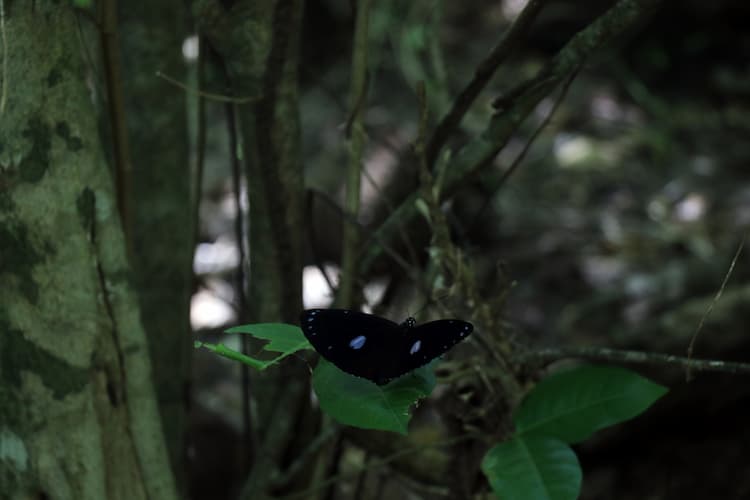
During another visit, the forested Latte Loop Trail leading to ancient caves and the site of a pre-historic Chamorro village was aflutter with hundreds of native blue-banded king crow butterflies. A young monitor lizard heard my footsteps and scurried under the roots of a tree.
Visitors and locals alike enjoy exploring the two-miles of trails in the refuge, relaxing on the 2½-mile-long uncrowded white sand beach, taking a guided tour of the ancient Chamorro village, or visiting the caves along the limestone cliff.
Among many other popular family attractions are the Valley of the Latte, named for the stone pillars that represent the culture of the Chamorro people and were used in ancient times as supports for communal houses.
Offering paddle boarding, river cruises and kayaking, the park also hosts workshops in traditional weaving with coconut leaves, coconut oil and coconut candy-making, and creating colorful flower crowns and leis.
One of my favorite places to while away a few hours is the Guam Museum, a treasure chest of information and artifacts about the history of the island, its people and environment. The interactive exhibits never fail to draw me in for a few hours of immersive education.
Hours are limited during the pandemic so call (671) 989-4455 / 989-2658 or email [email protected] to make a reservation.
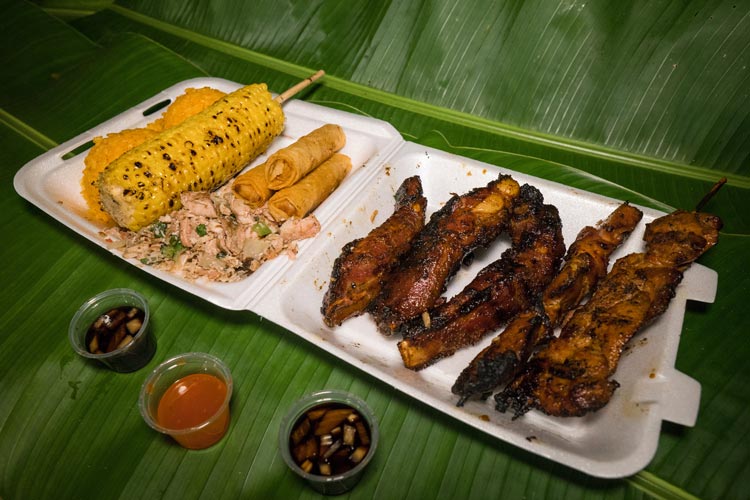
Food is Culture
Guam is the center of the ancient Chamorro culture and home to a large Filipino community. Toss in Micronesian, Korean, Japanese, Chinese and Thai, add a dash of Mexican and two handfuls of Spanish and that’s the cultural mix that is Guam.
It’s reflected in the locally-owned restaurants scattered around the island, many featuring reef fish or tuna caught that morning (Micronesia is the home office of tuna), coconuts, more than a dozen types of bananas, taro, papaya, breadfruit, mangoes, eggplant, pineapples, hot peppers, and more.
Guam is an island of villages that have evolved over the centuries from farming, ranching and fishing centers to today’s residential and commercial hubs.
Each village has its own patron saint, Catholic church and annual local festivals celebrating everything from locally-grown bananas and coconuts to peace and heritage. It’s a great way to experience the local culture while eating your way to glory.
Although the pandemic has curtailed events for the time being, contact the Council of Mayor’s office at (671) 472-6940 / 477-8461 or [email protected] for information about which ones are taking place and the location.
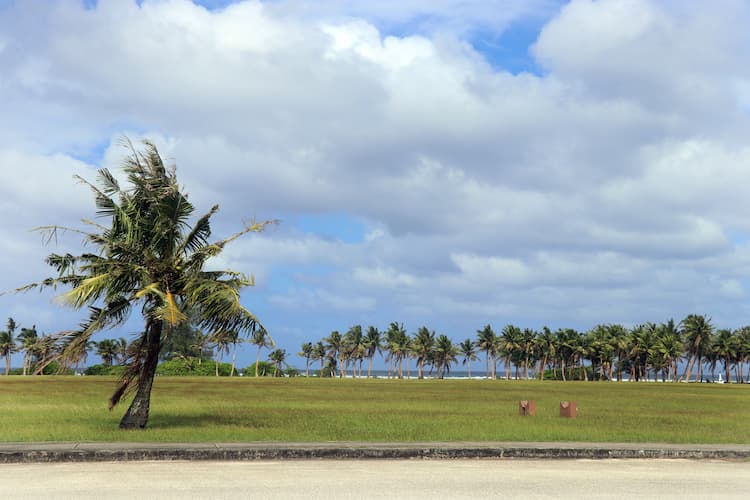
Yes, But What’s it Really Like?
When friends in the states ask what Guam is like, I reply, “It’s like Miami.” Hot, humid and the ocean is right out there. And over there.
The temperature is in the mid- to upper 80s year-round and there are two seasons: dry from January to May, and rainy from July to November when it’s a bit cooler. January is considered the best month to visit.
A tourist strip of large, brand-name hotels sits along the shore of Tumon Bay on the west side of the island. Chain restaurants with names like Appleby’s, California Pizza Kitchen, Ruby Tuesday and Lone Star are scattered around the main tourist and shopping mall areas.

Then there’s the largest Kmart in the world, Macy’s and Ross Dress for Less for shopping.
Nonetheless, it’s easy to stay away from the American-ness of it if you do what the locals do and go where they go. And since Covid hit, it’s easier than ever to avoid crowds because the throngs of Asian tourists have been reduced to a trickle.
But the gate is still open so bring your vax card and proof of its legitimacy, heed the 3Ws – Wear a mask, Wash your hands, Watch your distance – and enjoy your journey around this rarified island that is still largely unknown to Western travelers.
For current information about Covid-19, go to www.visitguam.com/about-guam/safety-tips/coronavirus.
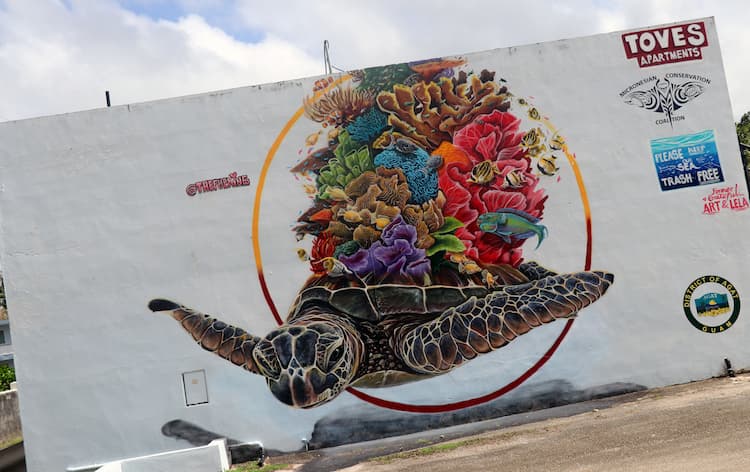
If You Go
Entry requirements for Guam are the same as for any U.S. destination. Although U.S. citizens are required to have a U.S. passport, on a case-by-case basis, photo I.D. and proof of citizenship may be accepted.
In general, citizens of most other countries must have a valid passport with a U.S. visa. For more information, go to www.visitguam.com/planning/.
Book This Trip
Ready to plan a Guam getaway? Start preparing with insider tips on the best sights, hotel and VRBO reservations, local restaurant reviews and more through TripAdvisor and Travelocity.
For the best flight deals and car rental options check out OMIO Travel Partner.
Read our articles about other destinations:
Author Bio: Writer/photographer Joyce McClure joined the Peace Corps as a Response Volunteer in August 2016 and traded the island of Manhattan for the island of Yap after a long career as a senior executive in marketing communications. When her service ended, she stayed on for five years and recently moved to Guam.
- Top 10 Things to Do in Ireland - April 25, 2024
- How to Get Around in Sydney: A Local’s Guide to Traveling Around Sydney - April 24, 2024
- The Low-Key Magic of Ghent, Belgium - April 22, 2024

